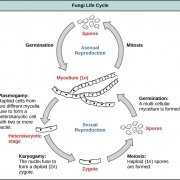Cleaning Up Mold in your Home – Misinformation on the Web
I love Google, and use it daily. But, Google is only as good as the information we feed it. And unfortunately, there is a lot of misinformation and half truths about cleaning up and removing moldy wood.
How to Remove Mold From Wood Furniture and Particle Board was written for the magazine ‘House Beautiful’ on 4/9/19. The article is about finding mold in a wood and particle board bookcase, including moldy books, and her suggestions for ways to clean up the situation.
I do not blame Sara for her inaccuracies. After all, she quotes and refers to authorities (US Forest Products Laboratory and US Occupational Safety and Health Administration) for her recommendations. How could she know that much of what she published is just plain wrong? It comes from official agencies, right?
Here’s some basic corrections to her article about cleaning books and wood/wood products.
1. Correct – Sara recommends wearing gloves, long sleeves, long pants and a mask to minimize exposure. We suggest wearing a N-95 particulate respirator approved by the National Institute for Occupational Safety and health. It is designed filter out at 95% of small particles in the air such as dust and mold.
2. Incorrect – Open your windows for ventilation while cleaning. Mold spores and mold fragments, which can be created during the cleanup process, blow around in the air, and settle on everything in sight. Use a fan in reverse cycle to pull the polluted air out of your house. Blowing air inside can cross-contaminate other areas in your home. Mold contaminated dust initiates mold growth in the presence of moisture.
Ideally, during remediation a piece of moldy furniture should be removed from the house for cleaning. If that is not possible, the best solution is to surround the area of remediation with plastic sheets to keep from spreading mold and mold dust to the far corners of your house. Then, arrange the fan to pull the air out of the house through an open window or door, to keep from stirring up mold spores and dust.
Since individuals don’t generally have the equipment to remove air from the house, anything more than a minor cleanup should be handled by a mold remediation specialist. Tip: Remember to remove your contaminated clothes and shoes before entering the rest of the house. Put them in plastic bags and take them out of the house. (What to do with these clothes)
3. Incorrect – Use bleach or Clorox wipes to clean the books. Bleach does not kill mold on non-porous surfaces. Here’s the correct method for cleaning books recommended by librarians. Note: Sunlight does not kill mold, but can reduce the moisture in an object to retard the growth.
4. Partially correct – Scrape or brush the wood to remove as many mold spores as possible. Again, it is important to seal off the area while removing the mold to contain cross-contamination. Mold spores spread easily and cannot be completely eradicated. Hammering and scrubbing irritates the mold, causing it to produce mycotoxins (very dangerous chemicals) to protect itself. Containing the cleaning area is most important. Professional remediation companies seal off the area, and use special equipment to pull the air out so the contamination doesn’t spread.
5. Incorrect – Clean the particle board with bleach. Bleach is only effective on non-porous surfaces. Bleach doesn’t not eliminate mold on wood of any kind. It may kill the top of the mold, making it look like it has done the job. However, bleach cannot penetrate to the ‘roots’ (hyphae). Generally, due to the moisture left in the wood from the bleach and water, the mold comes back with a vengeance. Best products: alcohol (kills everything), white cleaning vinegar (5% is best) and hydrogen peroxide. In small areas, certain essential oils are also effective. There are several good anti-fungal products as well (read here).
6. Incorrect – The sun kills mold. Ultraviolet sunlight may help to dry up moisture in your belonging or your house. Removing the moisture and the moisture source is the best way to prevent mold from growing.
More on UV light: Ultraviolet light breaks up the DNA of mold and mildews, which results in the sterilization of the mold. It can be effect in destroying viruses, bacteria and molds that pass through the light. The problem is that many mold spores and mold fragments in your home have settled on surfaces.
According to remediation company EnviroTech Environmental Services, “When companies claim that they battle mold using ultraviolet light, it sounds incredibly attractive to potential customers…Who wouldn’t want to enter a basement like Luke Skywalker with their ultraviolet light saber, ready to do battle with the ‘dark side’, in this case mold.
“Ultraviolet light only works if the light is held 1-2 inches from the affected surface, and depending on the surface, takes anywhere from 2-10 seconds in that area to effectively kill the mold. As the distance the light is from the wall increases, the intensity of the light decreases and renders the process ineffective. This process, when done correctly, is reported to kill 99% of the mold.
“Now let’s assume there is one million mold spores in an area. That means at the end of this process, there are still 10,000 living mold spores that are colonized and still reproducing in the supposedly treated area. This is a painfully slow and ineffective way to treat mold, not to mention ultraviolet light exposure is harmful to people and all living organisms. These lights emit ozone that is bad for our lungs, emit ultraviolet radiation, which is bad for the skin, damaging to the eyes and the immune system.”
7. Partially Correct – Replace damaged wood and particle board – Regular wood can be cleaned by scraping the mold, and cleaning with hydrogen peroxide, alcohol or an approved antifungal. However, particle board is not really wood. It’s made of compressed wood chips and resin, and sometimes coated or veneered when used in furniture, like the bookcase mentioned in this article. It is a low-density product (hear porous – think happy mold!). The mold you see is only the tip of the iceberg. The mold hyphae is inside the particle board, and may be under it. Most of the mold in homes is invisible to the eye, since mold does not need sunlight to grow.
You also need to know that mold is eating whatever it grows on. Cellulose is its most favorite food! And particle board and sheetrock are just the picnic mold is looking for. Best to remove and replace. Follow the directions in #1 for protection, and #2 to keep from cross-contaminating your house.
Now, the question is ‘What to do with the contaminated boards?’. Mold contaminated material is not regulated and can be disposed of as regular waste. In order to prevent the spread of mold to non-affected areas in your home and neighborhood, DO NOT BURN. Fire does not kill mold, but rather causes the spores to spread, along with the mycotoxins they produce. Contaminated material must be removed from the work area in sealed disposal bags or wrapped in plastic and remove to a designated dump area.
Important Notes:
1. Large scale remediation efforts should be conducted by certified remediation specialists.
2. HEPA filters can help to remove airborne mold spores. The good ones are reported to capture a minimum of 99.97% of pollutants at 0.3 microns. They do not catch micro mold fragments or mycotoxins. To effectively filter mold spores, place an air purifier in places where mold is frequently found, generally in moist areas like bathrooms, kitchens and basements. Mold spores do not die after they are caught in a HEPA filter. They may become dormant, but will grow again if they have moisture and food. The only true way to keep mold from growing in your home is to remove the moisture.
3. Keep the humidity in your house at 50% or lower. An inexpensive moisture meter is a good investment – check often. If you live in a warm climate, use the A/C to keep your home cool and dry. For more suggestions at keeping the humidity low in your home, follow the suggestions in this post (need reference).
4. Microscopic mold spores (seeds) floating through the air trigger allergic or asthmatic and lung reactions. Chemicals produced by molds called mycotoxins cause serious illnesses and sometimes even death. Mold infestations can have profound effects on your home, your health and your finances. Keep your house cool and dry. Use your nose and eyes to look for mold. Remember, mold can be making you sick even if you cannot see it!

 ©https://www.moldremediationus.com/
©https://www.moldremediationus.com/
 © biology.gatech.edu
© biology.gatech.edu  ©moldornot.com
©moldornot.com 



